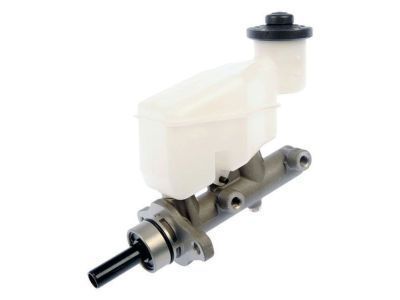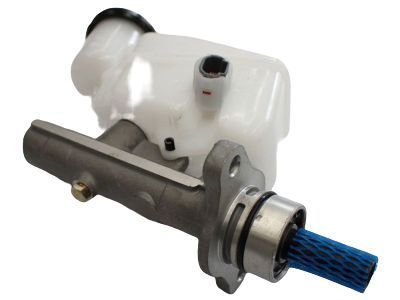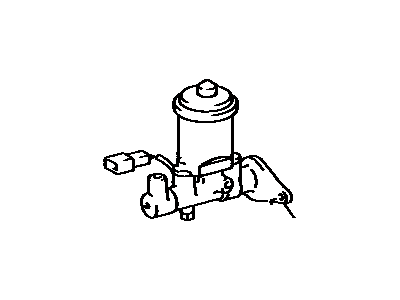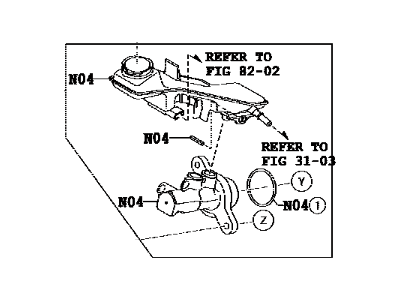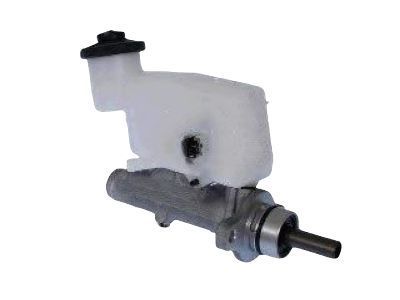

My Garage
My Account
Cart
Genuine Toyota Yaris Brake Master Cylinder
- Select Vehicle by Model
- Select Vehicle by VIN
Select Vehicle by Model
orMake
Model
Year
Select Vehicle by VIN
For the most accurate results, select vehicle by your VIN (Vehicle Identification Number).
14 Brake Master Cylinders found
Toyota Yaris Brake Master Cylinder Sub-Assembly
Part Number: 47201-52320$186.40 MSRP: $267.29You Save: $80.89 (31%)Ships in 1-3 Business DaysToyota Yaris Brake Master Cylinder Sub-Assembly
Part Number: 47201-WB003$208.13 MSRP: $298.44You Save: $90.31 (31%)Toyota Yaris Brake Master Cylinder Sub-Assembly
Part Number: 47201-52630$205.71 MSRP: $294.98You Save: $89.27 (31%)Ships in 1-3 Business DaysToyota Yaris Brake Master Cylinder Sub-Assembly
Part Number: 47201-52600$239.76 MSRP: $343.80You Save: $104.04 (31%)Ships in 1-3 Business DaysToyota Yaris Brake Master Cylinder Sub-Assembly
Part Number: 47201-52620$239.41 MSRP: $343.30You Save: $103.89 (31%)Ships in 1-3 Business DaysToyota Yaris Brake Master Cylinder Sub-Assembly
Part Number: 47201-52470$205.42 MSRP: $294.56You Save: $89.14 (31%)Ships in 1-3 Business DaysToyota Yaris Brake Master Cylinder Sub-Assembly
Part Number: 47201-WB001$208.13 MSRP: $298.44You Save: $90.31 (31%)Ships in 1-3 Business DaysToyota Yaris Brake Master Cylinder Sub-Assembly
Part Number: 47201-52460$237.79 MSRP: $340.97You Save: $103.18 (31%)Ships in 1-3 Business DaysToyota Yaris Brake Master Cylinder Sub-Assembly
Part Number: 47201-52642$263.54 MSRP: $377.89You Save: $114.35 (31%)Ships in 1-3 Business DaysToyota Yaris Brake Master Cylinder Sub-Assembly
Part Number: 47201-52610$205.71 MSRP: $294.98You Save: $89.27 (31%)Ships in 1-3 Business DaysToyota Yaris Brake Master Cylinder Sub-Assembly
Part Number: 47201-52650$255.80 MSRP: $366.80You Save: $111.00 (31%)Ships in 1-3 Business DaysToyota Yaris Brake Master Cylinder Sub-Assembly
Part Number: 47201-52652$255.80 MSRP: $366.80You Save: $111.00 (31%)Ships in 1-3 Business DaysToyota Yaris Brake Master Cylinder Sub-Assembly
Part Number: 47201-52640$263.54 MSRP: $377.89You Save: $114.35 (31%)Ships in 1-3 Business DaysToyota Yaris Brake Master Cylinder Sub-Assembly
Part Number: 47201-52330$162.97 MSRP: $231.69You Save: $68.72 (30%)
Toyota Yaris Brake Master Cylinder
If you are in demand for superior quality and affordable OEM Toyota Yaris Brake Master Cylinder, then shop with us! We own a wide range of the reduced-priced genuine Toyota Yaris Brake Master Cylinder. You can purchase in confidence as all parts come with a manufacturer's warranty. Any issues with our products? No need to worry as we have a hassle-free return policy to guide you every step of the way.
Toyota Yaris Brake Master Cylinder Parts Questions & Experts Answers
- Q: How to Remove and Refit the Brake Master Cylinder on Toyota Yaris?A:To do this, first unscrew the wiring plug for the brake master cylinder fluid level warning sensor, then pump out the hydraulic fluid using an old battery hydrometer or carry out the affects by everting the car, removing the wheels and drawing the fluid off through the front bleed nipples. Then, remove the clutch brake master cylinder supply hose from the reservoir sideward and do not forget to cover it to avoid losing or getting the clutch fluid dirty. Locate the points where the brake pipe fittings are connected to the brake master cylinder, then remove the union bolt on the pipe, with the help of brake spanner, in case they are very tight, use penetrating oil. Remove the brake master cylinder securing nuts and take out the brake master cylinder out of the servo unit while preserving the O-ring for use later. If necessary, retreating the assembly by pulling the pin and removing the reservoir together with the two seals that can be fit in new during the process. If the brake master cylinder is bad, it is sent for replacement as there are no overhaul kits on this model. For refitting, clean the contact surfaces of the brake master cylinder and servo, in the case of the O-ring need to be replaced, put a new O-ring to the back of the brake master cylinder, appreciable with some force to tighten the nuts to the specified torque. Insert quite tight the brake pipes into the corresponding holes of the brake master cylinder, and then tighten the union nuts with an adequate engagement of the threads. Top off the levels in the reservoir with new brake fluid and bleed the brake hydraulics, maybe the clutch as well in some cases. Last but not the least, apply the brakes gently, and take the car back to normal road use.
Related Toyota Yaris Parts
Browse by Year
2020 Brake Master Cylinder 2019 Brake Master Cylinder 2018 Brake Master Cylinder 2017 Brake Master Cylinder 2016 Brake Master Cylinder 2015 Brake Master Cylinder 2014 Brake Master Cylinder 2013 Brake Master Cylinder 2012 Brake Master Cylinder 2011 Brake Master Cylinder 2010 Brake Master Cylinder 2009 Brake Master Cylinder 2008 Brake Master Cylinder 2007 Brake Master Cylinder 2006 Brake Master Cylinder
